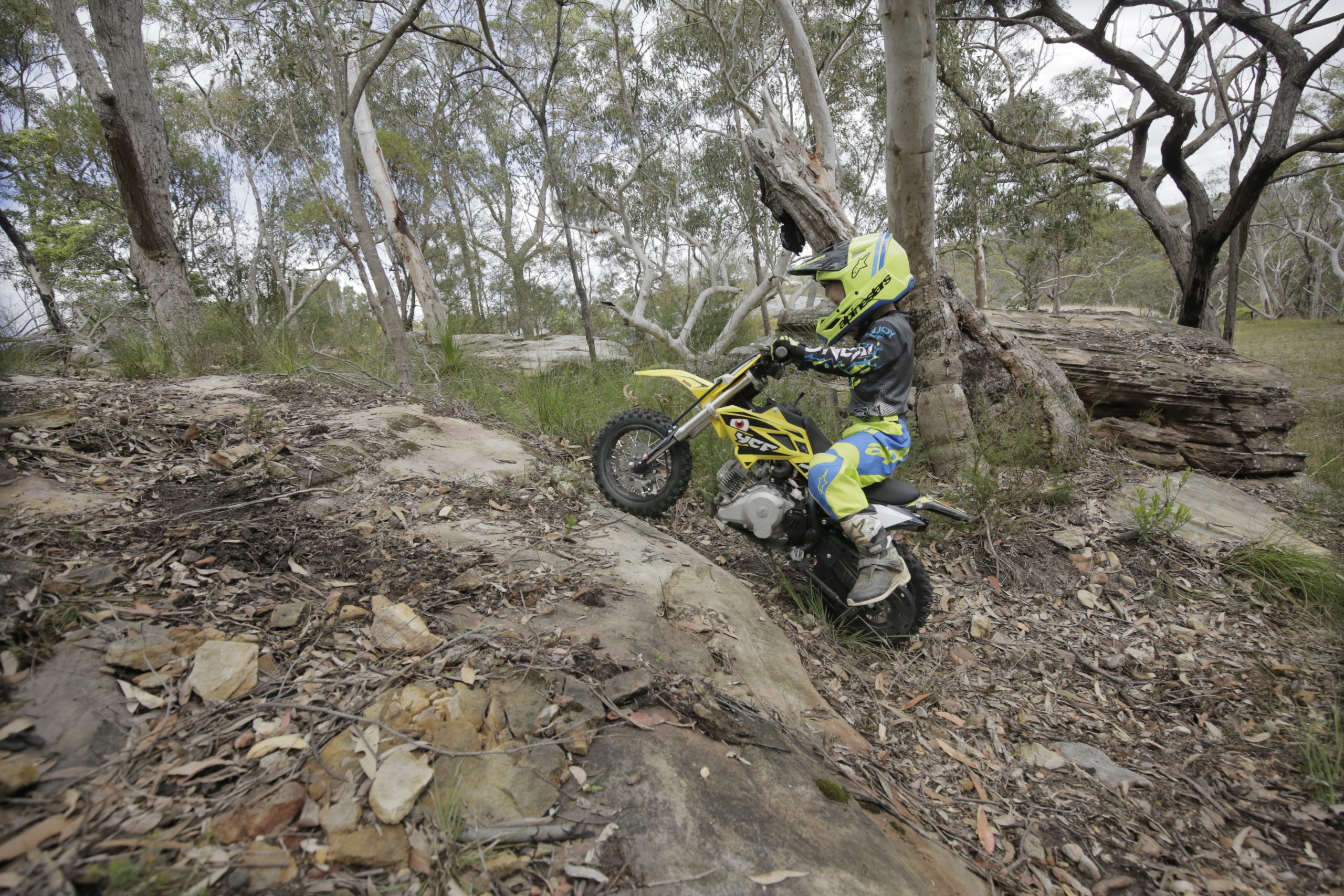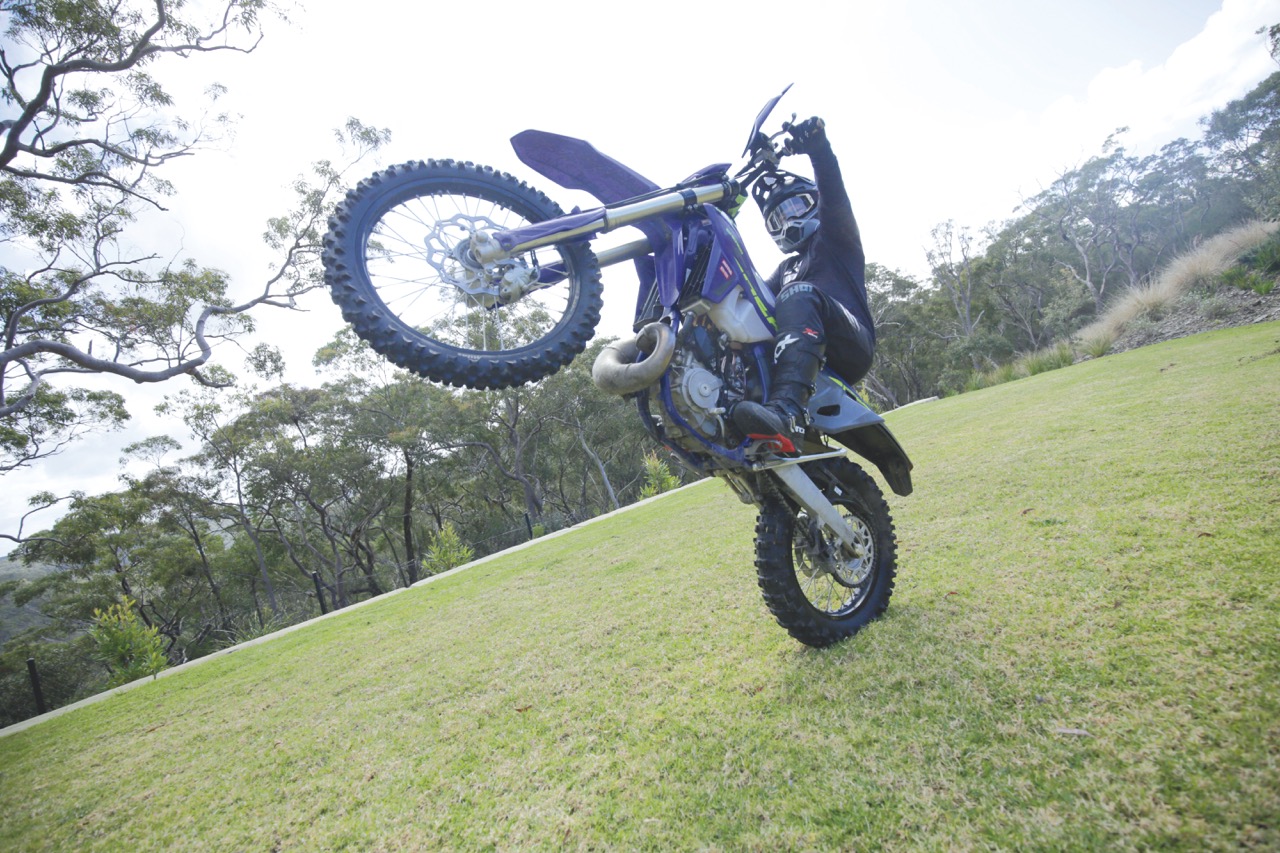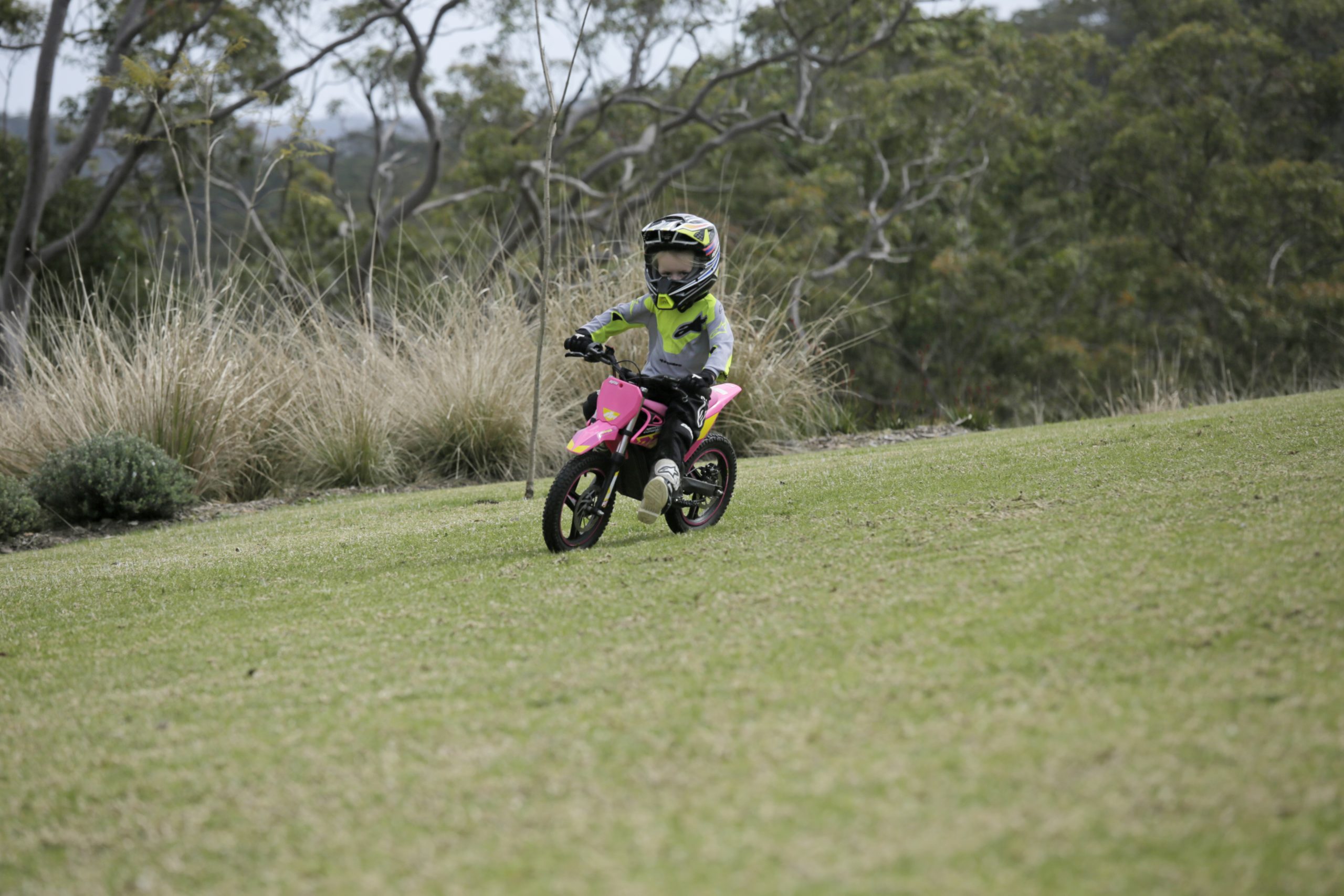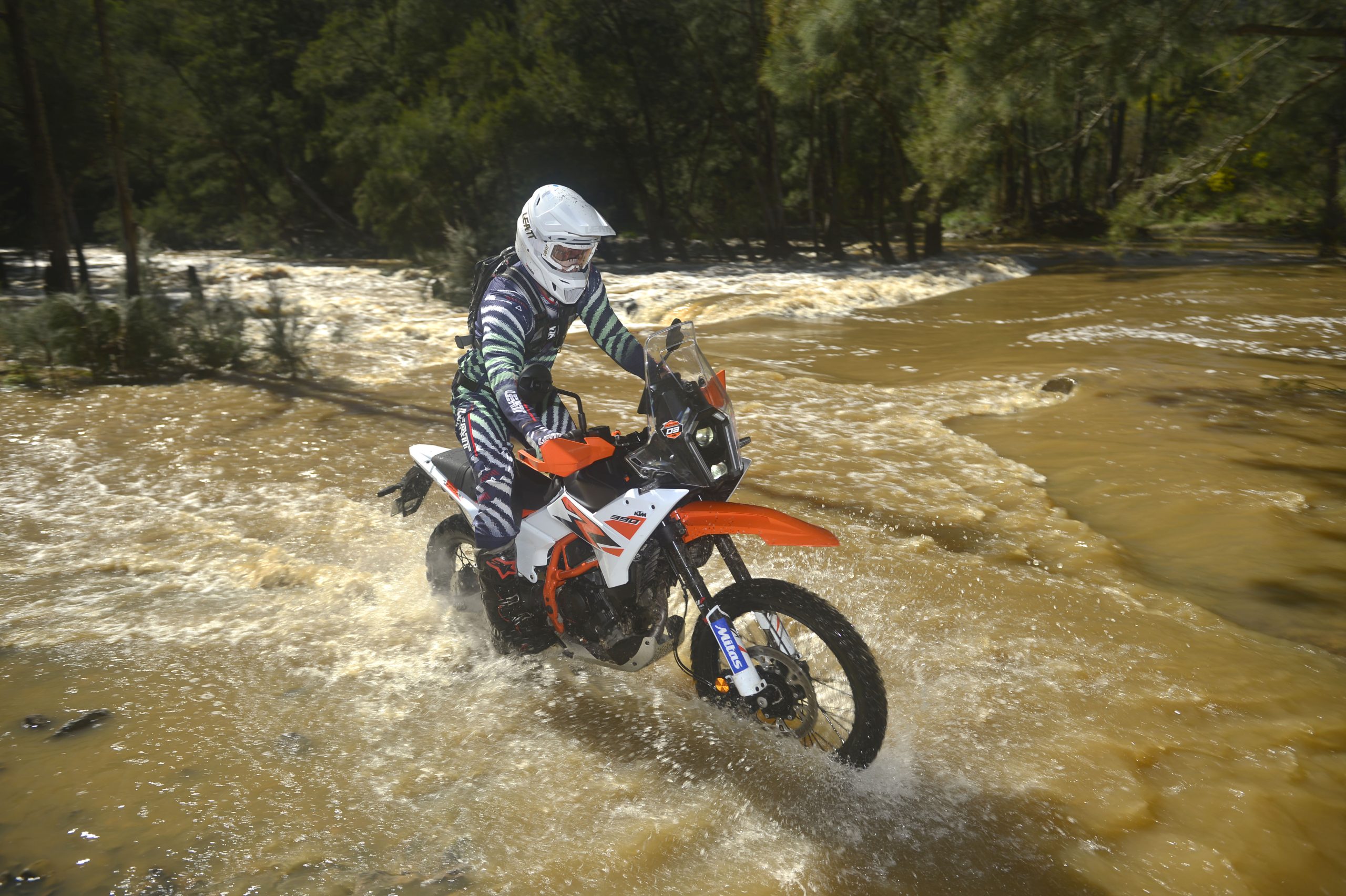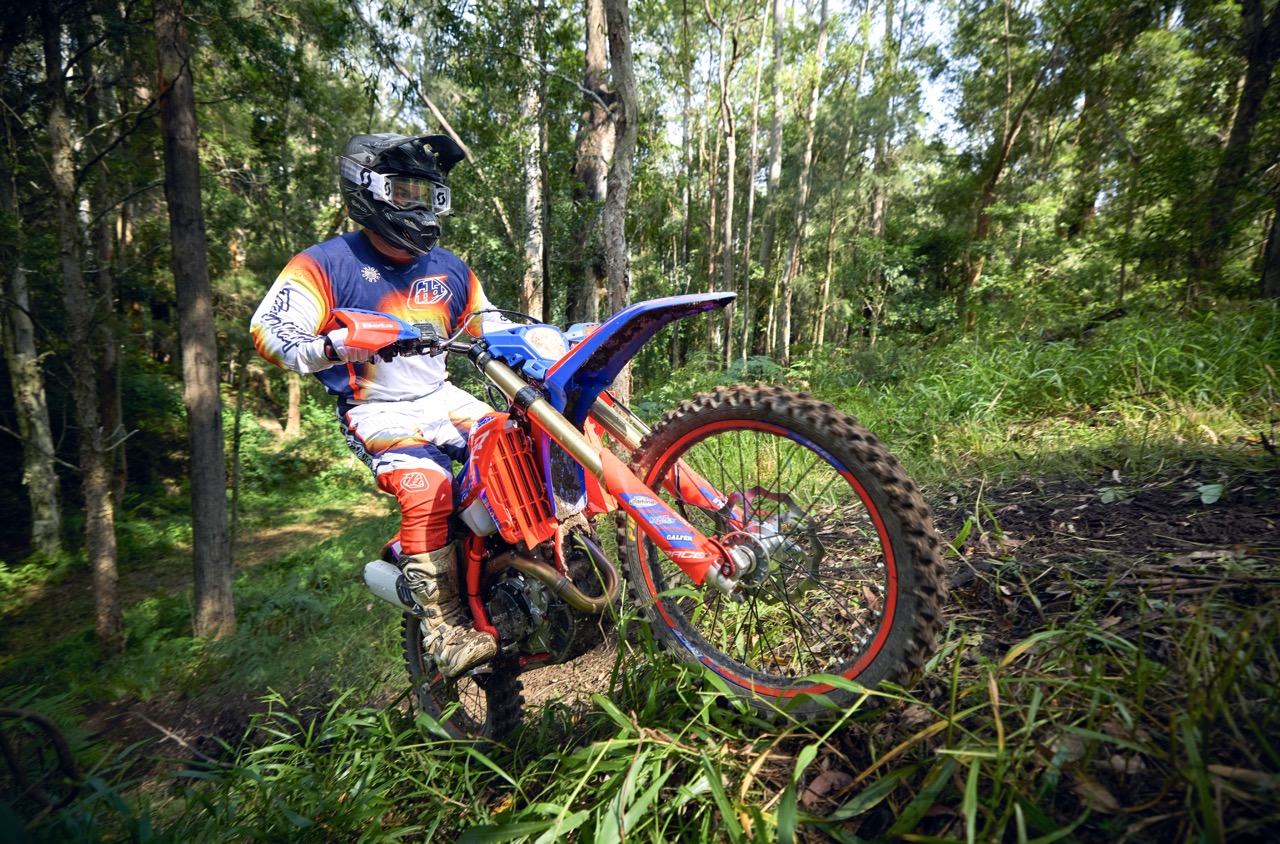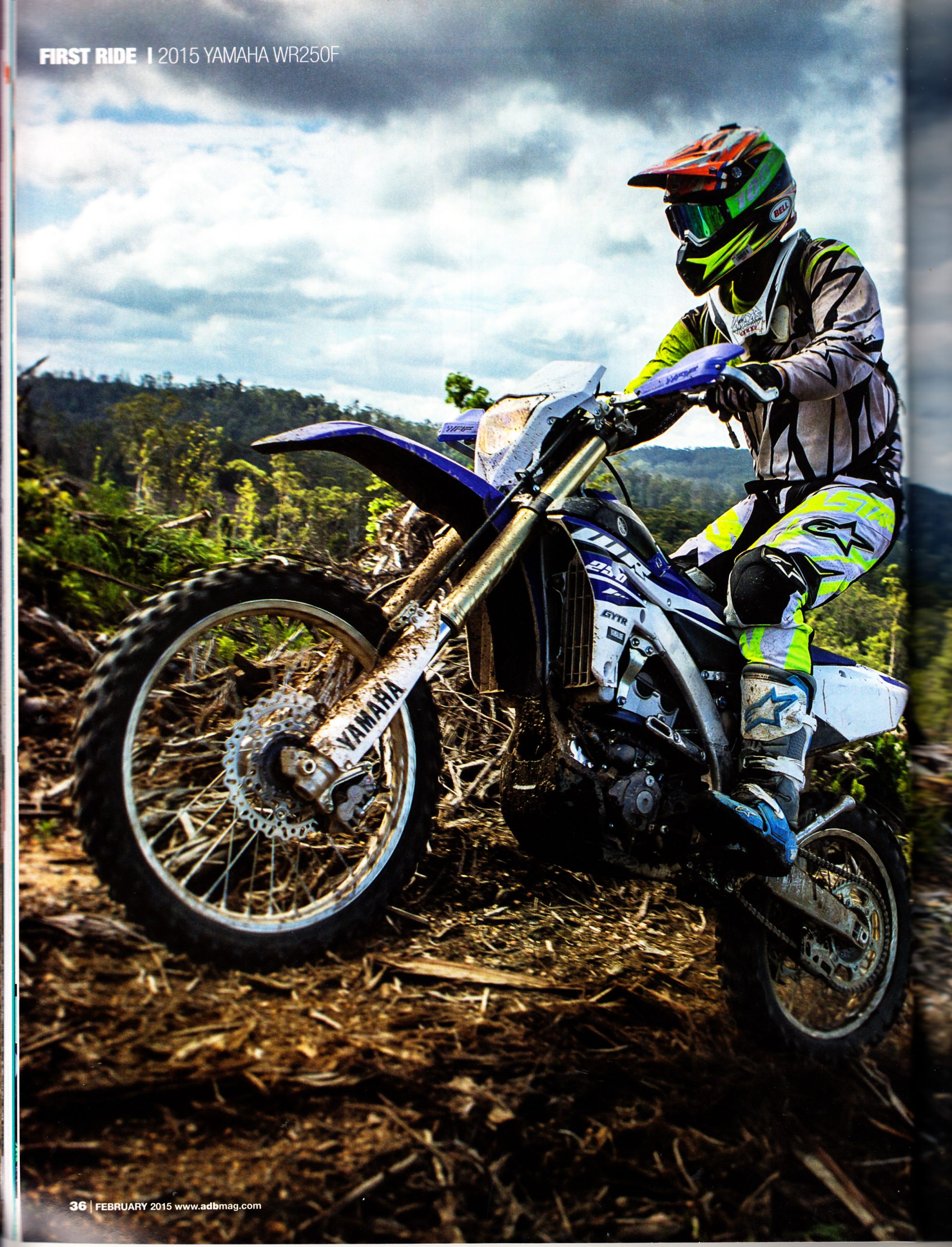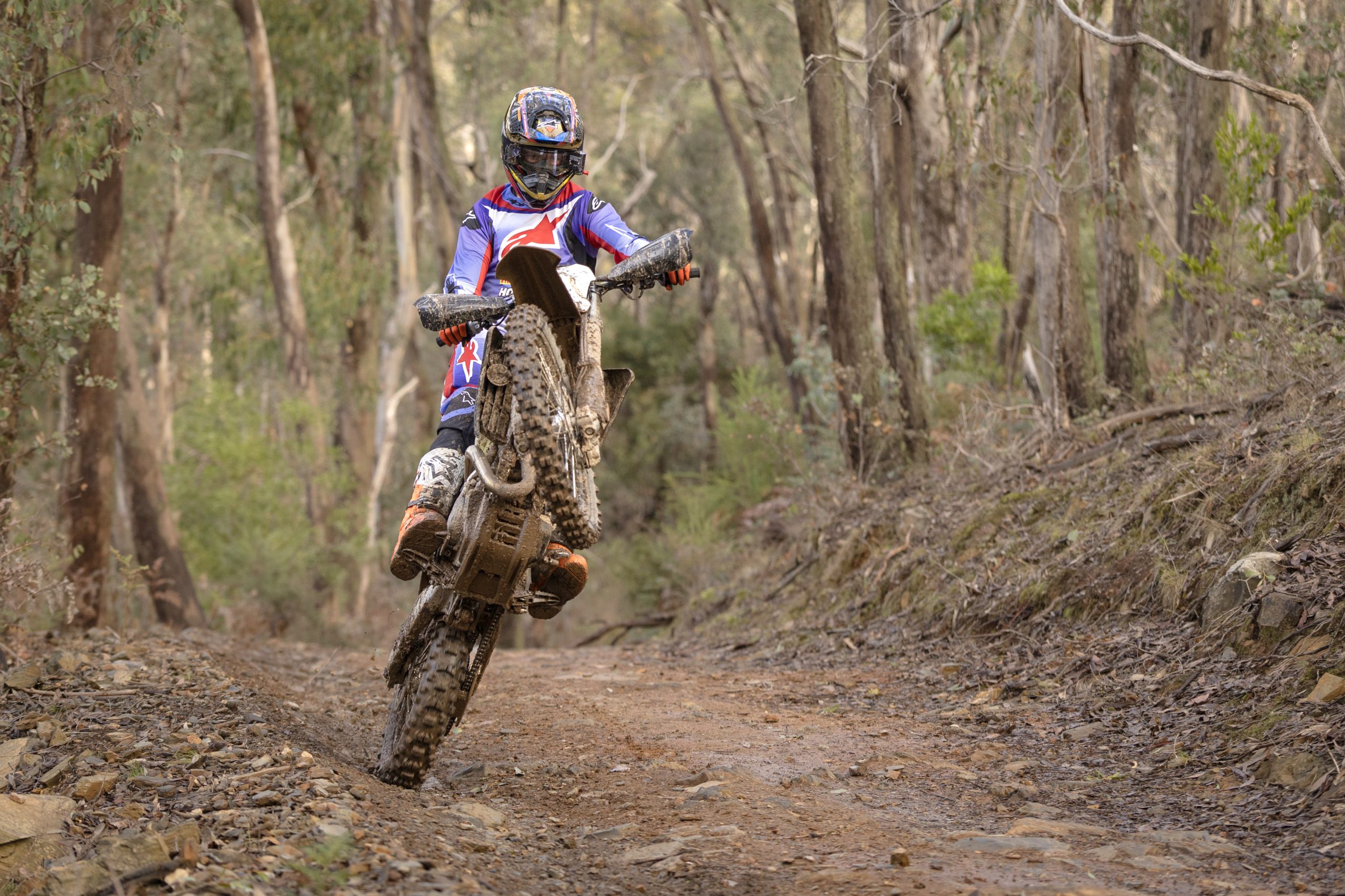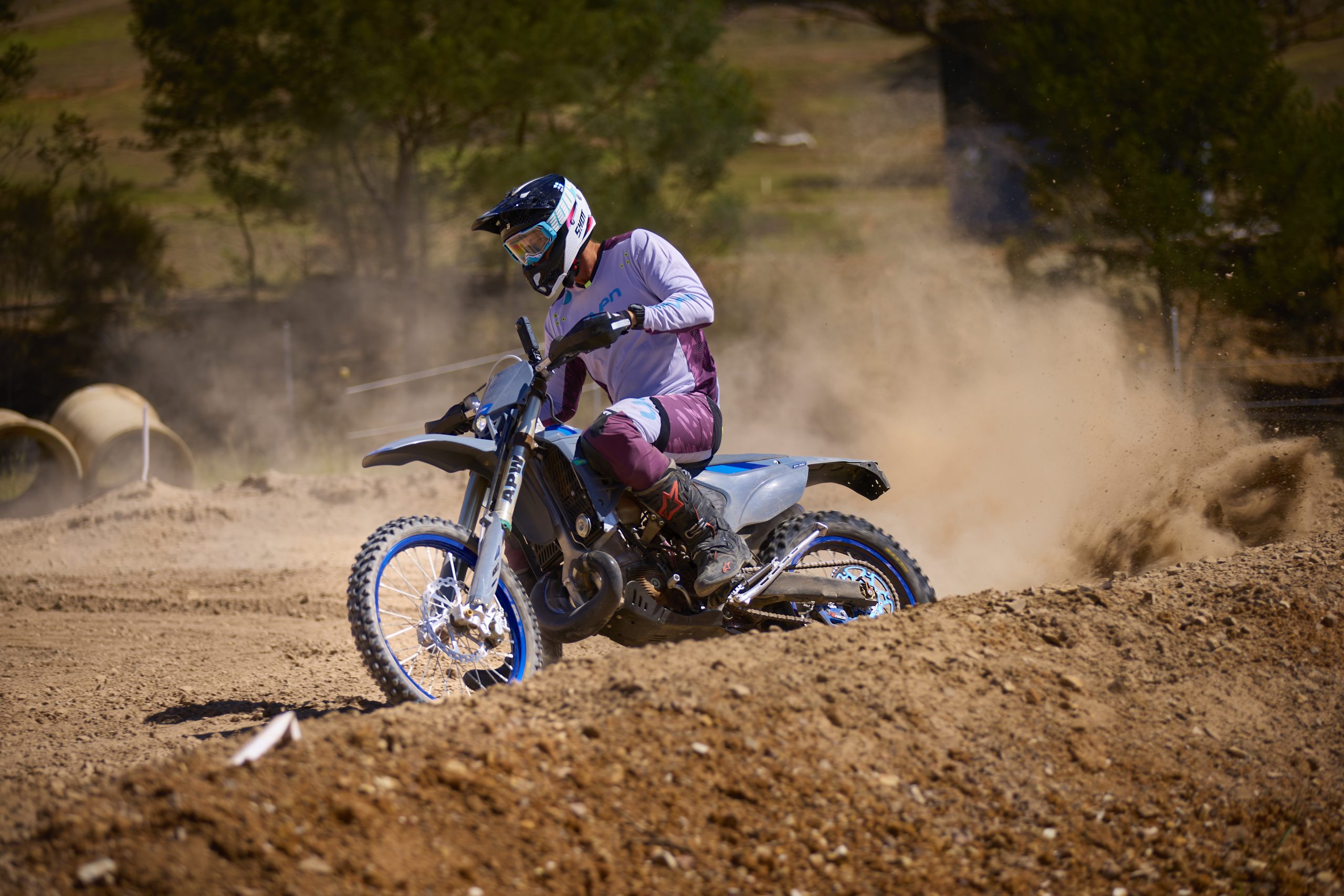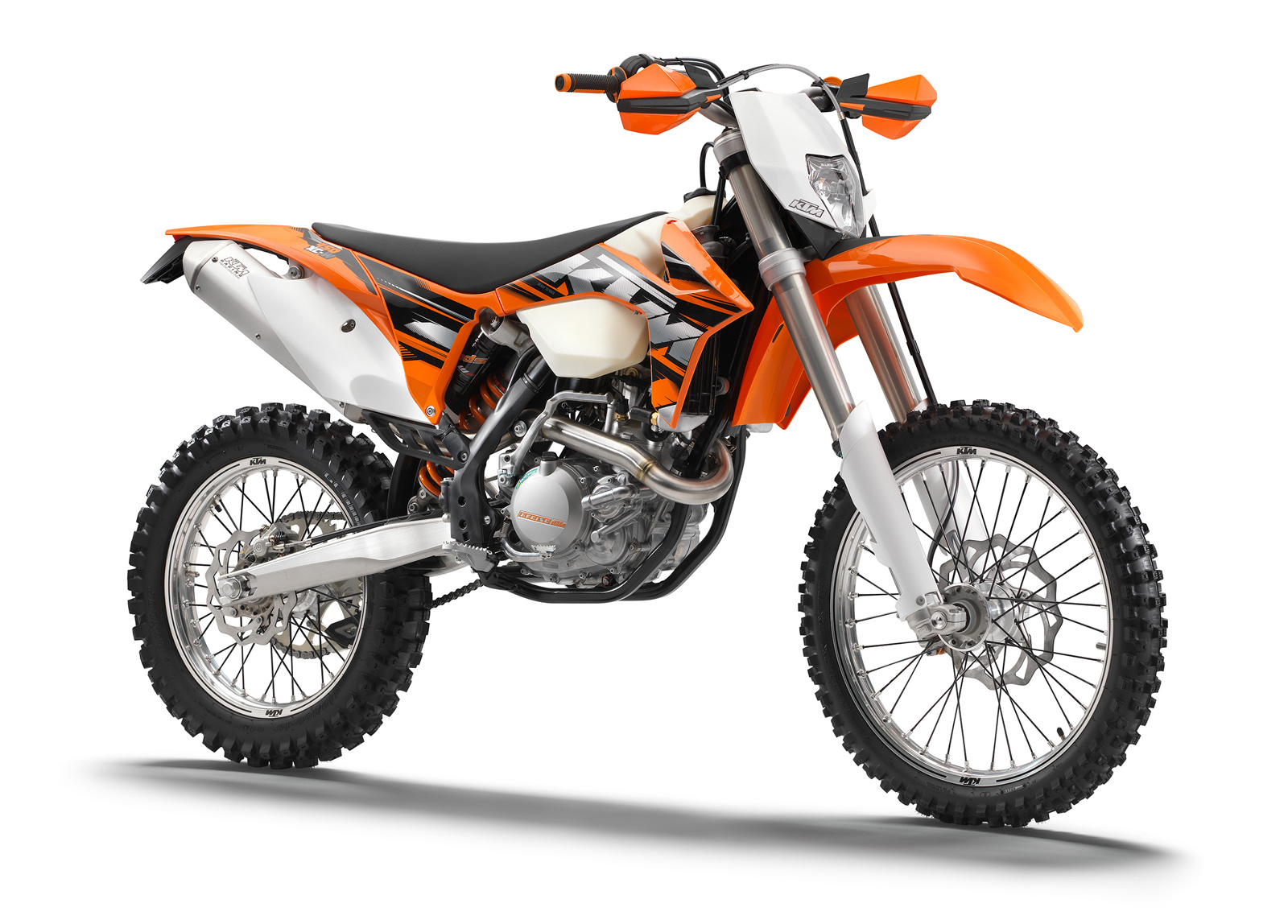Manufacturers like to use the phrase “all-new” when marketing their latest models but rarely are they actually all-new. That’s not the case for the 2024 KTM EXC range. Everything from the suspension to the chassis and motor have been changed. In fact, there were parts on the bike like the radiator cap that weren’t even mentioned in the presentation that have been changed (it is now plastic). The list of new parts is as high as the Maloti Mountains in the Drakensberg system of Lesotho where we were riding (which has a maximum elevation of 3482m) so I won’t bore you with a regurgitated press release of the all-new stuff. You can see our abbreviated list of new parts in the sidebar.
Instead, I want to focus on which of those new parts make the most difference. So, starting with the biggest change in performance for 2024, here’s a full rundown on the most improved players for the next generation of 2024 KTM EXC range.
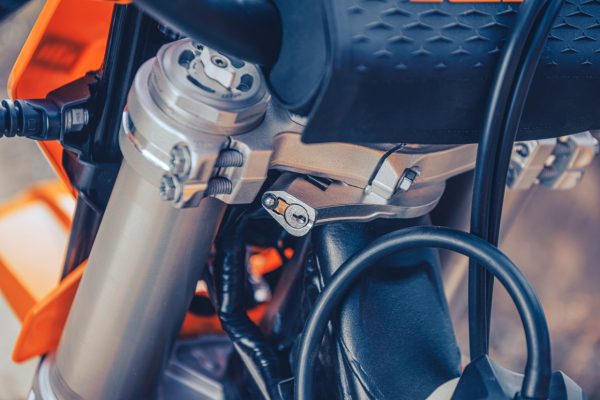
Fork
Finally, KTM and WP have ditched the open cartridge XPLOR fork and replaced it with a 48mm WP XACT closed cartridge job that sports a fancy new mid-valve piston concept. The fork has a new hydro stop in the last 68mm of the stroke to stop it blowing through and the seals have also been improved to stop dirt getting in.
These changes saw the fork length increase from 928mm to 940mm while the travel has increased from 292mm to 300mm. The new fork also features rebound and compression adjustment via the hand-adjustable clickers on the bottom of the fork shoe and on top of the fork cap. There is no longer any need to go looking for the flat blade screwdriver.
The suspension was undoubtedly the biggest improvement. In all models it was firmer and held up so much more than the old system. In fact, despite still bottoming out the fork on some of the big ledges we dropped off, I never felt a harsh clunk because the hydro stop at the bottom meant the oil was responsible for stopping the leg, not metal on metal.
The fork certainly feels firmer and this is most notable when plodding along at the start of the ride. That XR-like sponge is gone and once the bike is in third gear the suspension begins to come into its own, holding up with so much control in the mid-part of the stroke. It’s never harsh, just firm and even for a bloke weighing 100kg with gear on, I never felt like it dived or was too soft
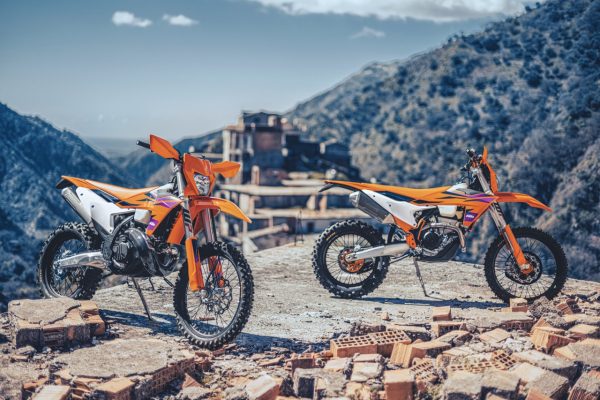
TBI
KTM introduced injection to their two-strokes back in 2018 but it was via the throttle port. For 2024, the two-strokes still feature injection but it is now via the throttle body. The throttle body was developed by Keihin and also sports newly designed injectors producing a finer spray of fuel for a cleaner ignition and less fuel wastage. There are two injectors that work in conjunction with each other by injecting at opening and then when stretching the throttle cable.
The power is definitely smoother than last year and gruntier down low. It still doesn’t have as much torque as a carburettor when crawling along but it will be able to do the slower speed the carbs can do without stalling. While waiting for a chance to work my magic for the camera I was playing around on a steep rock slab with the crawling ability and was blown away at how far I could slip the clutch to get the bike moving before I needed to give it some throttle.
As expected, the bike also ran without any fluff regardless of the altitude. At over 2000 metres it still felt a little down on power, as to be expected, but it didn’t run lean as the ECU read the air and density perfectly. It was flawless.
And finally, this isn’t specifically TBI related but the two-stroke motors, especially the 300 EXC had almost no vibration. They vibrated even less than previous models, which were already pretty good, and much less than the MY24 four-stroke range!
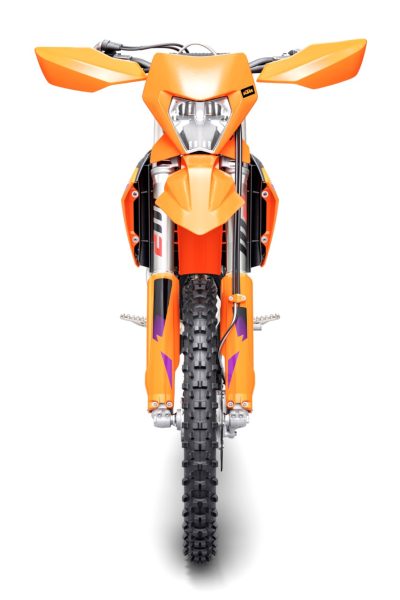
ELECTRONIC POWER VALVE
Now that the two-strokes are essentially EFI, the power valve is controlled according to the throttle position and engine RPMs. Being auto-calibrating, there’s no more hassle with incorrect power valve adjustments, with the EMS calculating the ideal position automatically. This was largely the reason for such smooth, predictable power delivery.
But the best part about the electronic power valve is the two engine maps you can switch between on the handlebar which are determined by the ECU not the ignition. This means they can be more different, with the aggressive map and the soft map further apart than ever before. As a bigger bloke and because we were at altitude I just left it in the Green map (aggressive) and it was noticeably more powerful than the White map.
REED VALVE
The reed valve case has received an important design update, with newly added plastic flaps on the outside of the reed valve case for better sealing of the entire intake tract. This new design negates over-fueling in extreme up- or downhill sections with no bogging down or running rich.
It’s the same 39mm throttle body KTM developed with Keihin for the motocross models but it has a specifically tuned ECU from Vitesco for enduro and of course differing riding conditions. The fuelling was impeccable, it never missed a beat, even at the altitude we rode.
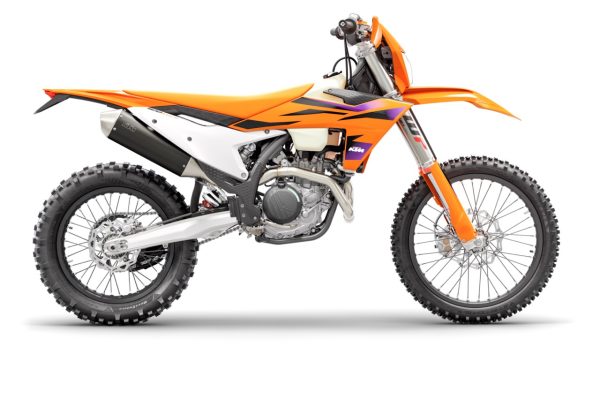
FRAME
For years KTM have persisted with a steel chassis because they typically offer more flex (something they used to brag about 10 years ago) and for whatever reason, KTM just like them. We tend to agree with them for trailriding but as suspension has improved, the need for the frame to do the heavy lifting when it comes to flex at high speeds hasn’t been as necessary. So, it was great to see KTM make some significant changes.
The hydro-formed, laser-cut, and robot-welded frame has undergone major updates to essentially stiffen the longitudinal rigidity which made it more stable. It now has the same rigidity as the motocross frame and the same stiffness but with slightly more flexible engine mounts. It has a forged steering head connection, thinner but stiffer walls and an all-new shock mount, which is no longer connected to the main frame tube.
The thicker frame walls help with rigidity in high-stress areas such as the steering head and the shock mounts. The whole frame geometry and the footrest mounts have been moved inwards, making for an overall slimmer profile. This makes the footpegs less susceptible to hooking up in deep ruts or narrow tracks.
The frame is noticeably stiffer and when combined with the firmer suspension, the 2024 KTM EXC range now feels more like a Japanese bike than ever. They’re still a long ways apart which is good but the latest frame has inched it closer. Sitting on the bike it is noticeably narrower but gripping it with your knees isn’t any harder. The narrower feeling bike makes it feel more agile and easy to turn.

OFF-ROAD CONTROL UNIT
An all-new and totally independent Offroad Control Unit (OCU) replaces the use of electronic fuses and relays and can be found under the seat. Now we know this sounds confusing and it is, well at least it was for us at the launch. Essentially, with the OCU, instead of having a bunch of wiring looms connected to a fuse box, all wiring looms pass through the OCU and if one loom gets a power surge or shorts out, the light on the control box immediately isolates the loom and notifies you by turning red. This makes for quick and easy troubleshooting on the trail, and eliminates the need to carry additional fuses. Brilliant!
AIRBOX
The 2024 KTM EXC airbox design has been changed again with even better airflow apparently. This is almost impossible to test but what we did love is that the air filter is now even easier to remove. It’s toolless and has one small latch down the bottom to hold it in place. We played around with it and you could remove it and replace it with a blindfold on.
SERVICEABILITY
Like the airbox this isn’t so much performance as it is useability. For the 2024 KTM EXC range there is now draining hoses for liquids and service markers on the engine like this:▲, that clearly show where to use washers. There are markers showing the amount of oil needed and the torque settings needed to nip up a bolt, right there on the bike so you don’t have to constantly refer back to your manual. Added lock positions for the cam chain also improve the serviceability of the valvetrain.
FOOTPEGS
The footpegs are new for 2024 and drastically different to the previous set. They’re bigger and more aggressive with a different pattern in the base to be even stronger. They also swivel further up to get out of the way.
The new footpegs got so much grip, I struggled at times to get my foot off them and under the gear lever! But for hanging on through water crossing or up steep hills, it felt like your boots were clipped in.
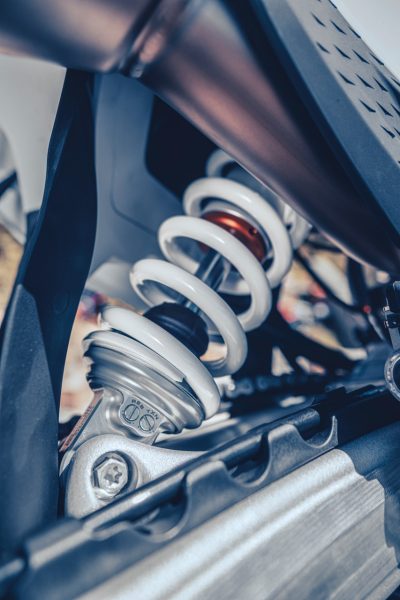
FOUR-STROKES
I feel like I’ve talked about the two-strokes a lot and that’s because they are the most improved. But the four-strokes have also shown great improvement. The fuelling and power across the board felt much the same. All four four-strokes received the same upgrades with engineers positioning the engine closer to the middle of the bike by tilting the engines two degrees backward and repositioning the front sprocket 3mm lower.
This update is essentially what marketing departments call mass-centralisation. The bikes felt a little more balanced thanks to the fork and chassis changes but it was the on and off throttle that improved the most. The four-strokes were less likely to flame out and die when shutting the throttle on and off so that should mean less scorpion moments when approaching a log.

Worth the trip?
It’s not easy getting to some of these launches and Lesotho was two days there, two days back, but it was definitely worth it. The suspension is firmer, less likely to blow through and dive and it is now easier to charge hard into bumps without it behaving like a Red Bull sponsored pogo stick. The fuelling on the two-strokes has drastically improved; it’s more linear with more low down grunt.
The frame is stiffer making for less arse-puckering moments when hauling at speed through a paddock or charging into braking bumps in the single track between the pine trees. The use of an OCU is genius and combined with the notes on the outside of the bike for servicing, will make living with the bike so much easier.
I’ve never been to a launch with so many changes to a bike. As we walked around the display bike asking the engineers questions like ‘What is this?” even they had to refer back to their diary for notes. There were new parts not even mentioned in the press kit like the single piece handlebar mounts so your handlebar doesn’t bend in the mount or the floating front brake disc that is less-likely to bend in a crash. There were too many changes to this model year for KTM for me to list them all but rest assured, I am going to break down every model and look at all the hidden new pieces over the next five issues. Don’t mis out!
Words | Mitch Lees
Photos | Sebas Romero & Francesc Montero
